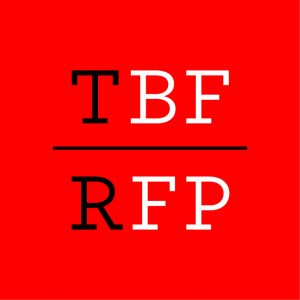As of assessment year 2020 (for financial years starting on or after 1 January 2019) Belgian companies and Belgian establishments of non-resident companies are subject to the interest limitation rule.
Under the interest limitation rule, ‘exceeding borrowing costs’ (financieringskostensurplus/surcoûts d’emprunt) will be disallowed for tax purposes if they exceed the highest of two thresholds: 30% of the taxpayer’s EBITDA and a de minimis threshold of EUR 3,000,000 (Article 198/1 of the Belgian Income Tax Code, (ITC)).
The ‘exceeding borrowing costs’ of a taxpayer is the ‘net interest’ i.e. the positive difference between (tax-deductible) interest costs and (taxable) interest income. However, such exceeding borrowing costs are being determined on the basis of a broad economic concept of ‘borrowing costs’, including not only interest but also economically equivalent amounts. This article discusses the notion of interest and, in particular, of economically equivalent costs and income under the Belgian interest limitation rule.
‘Borrowing costs’ in the ATAD
The Belgian interest limitation rule implements Article 4 of Council Directive (EU) 2016/1164 of 12 July 2016 (Article 198/1 ITC). In line with the BEPS best practice approach, ATAD upholds a broad concept of borrowing costs. The reason is obvious: if the interest limitation rule would be applied to a narrowly defined interest concept (interest on debt obligations), a different treatment would be applied to taxpayers that have a similar economic position but use different forms of financing.
‘Borrowing costs’ in the ITC
Article 198/1, § 2 ITC defines ‘exceeding borrowing costs’. It is clear that the legislator intended to align the notion of (exceeding) borrowing costs with the broad ATAD definition, including all types of compensation contractually due for the time value of money.
The legislator has however left it up to the government to determine, by royal decree, the items which are ‘economically equivalent’ to interest costs and income. This has been done by Article 2 of the royal decree of 20 December 2019, which inserted a new Article 734/8 into the royal decree implementing the ITC.
On the basis of a literal reading, Article 198/1, § 2 ITC only refers to costs and income that are economically equivalent to interest, whereas Article 4 ATAD (as well as the BEPS best practice approach) also refer to other ‘expenses incurred in connection with the raising of finance’.
The consequence of including such ‘other expenses’ within the notion of ‘economically equivalent payments’ seems to be that they are taken into account for calculating the exceeding borrowing costs both in the hands of the debtor (increase of the exceeding borrowing costs) and in the hands of the recipient (decrease of the exceeding borrowing costs). Interest and economically equivalent payments under the Belgian interest limitation rule
As mentioned above, the Belgian legislator intended to align the notion of (exceeding) borrowing costs with the broad ATAD definition, including both interest and economically equivalent costs and income.
Interest
Costs and income that are recorded in the profit and loss account under financial results and qualify as interest for Belgian tax purposes are obviously taken into account to determine the exceeding borrowing costs of a taxpayer.
Interest is broadly defined in the ITC as “interest, premiums and any other income from loans, including collateralisation agreements with respect to financial instruments, from deposits and from any other receivable”
Other than interest on loans and other forms of debt receivables, “interest” therefore covers a broad spectrum, including:
- Payments under profit participating loans.
- The interest component in finance lease payments.
- Imputed interest on instruments such as convertible bonds and zero coupon bonds.
- Amounts under alternative finance arrangements.
- The lending fee in case of a bond or stock loan.
Costs and income economically equivalent to interest
Article 734/8, § 1 RD/ITC enumerates the cost and income items that are considered economically equivalent to interest:
- Amortisation of capitalised interest.
- Inventory reduction.
- The compensation due by a taxpayer to a foreign company belonging to the same group and which, in application of Article 185, § 2, a, ITC and the transfer pricing rules, is limited to a compensation for making capital available.
- Foreign exchange gains and losses, but only to the extent realised upon the payment of interest under a loan.
- Guarantee fees and similar costs due as a result of the conclusion of an agreement in which the other party guarantees the payment to the beneficiary of a predetermined amount in circumstances described in the agreement.
- Arrangement fees and similar costs (e.g. administrative fees) due as a result of the conclusion of a loan agreement
- The discount on interest-free or low-interest loans.
The notion of economically equivalent payments under the ATAD and the BEPS best practice approach is potentially open-ended. In line with this, the government has not limited the qualification as economically equivalent payments to the above items enumerated by royal decree.
Taxpayers can demonstrate that other costs or income are economically equivalent to interest. Such qualification is however subject to certain conditions. In addition to the (obvious) requirement that the economically equivalent nature is proven, certain conditions apply in order to avoid a (Belgian) mismatch. Finally, taxpayers cannot simply claim such qualification in the corporate income tax return; an advance tax ruling is required.
If payments are treated as economically equivalent to interest income in the hands of the creditor (thus reducing its exceeding borrowing costs) but not as economically equivalent to interest costs in the hands of the debtor (thus not increasing the debtor’s exceeding borrowing costs), a “mismatch” arises. In order to avoid such mismatch, Article 734/8, § 2 RD/ITC imposes that the other party accepts the economically equivalent nature and that certain identification requirements are complied with. These additional conditions are considered necessary by the Belgian government in order to avoid such a mismatch in a purely Belgian context, i.e., if not only the recipient (who is likely to claim the economically equivalent nature) but also the debtor is subject to Belgian income taxation.
Concluding remarks
With the adoption of the royal decree of 20 December 2019, Belgian corporate taxpayers that are subject to the interest limitation rule can now finally determine the impact of this new rule.
As far as the notion “costs and income economically equivalent to interest” is concerned the government (like the legislator) clearly intended to align as much as possible to the definition under ATAD and the BEPS best practice approach.
The choice of the government to work with a limited list of per se economically equivalent payments and to defer the “catch-all” covering “any other costs and income economically equivalent to interest” to an advance clearance by the Belgian tax ruling commission, is defendable.
Taxpayers who believe that “other” payments qualify as economically equivalent to interest are thus free to seek a ruling from the Belgian ruling commission confirming this qualification. As such, the ATAD definition seems substantively implemented in the Belgian interest limitation rule.
Another observation with respect to the notion “economically equivalent to interest” is the significant difference in implementation between Member States. This is of course no surprise as the ATAD intentionally only sets general principles, whilst leaving it up to the Member States to shape the specific elements in a way that fits best their corporate tax systems.
This article is an abridged version of the article “Interest and economically equivalent payments under the Belgian interest limitation rule” by Axel Haelterman and Nikolaas Van Robbroeck, which was published in Tijdschrift Beleggingsfiscaliteit – Revue Fiscalité des Placements – Tax Clicking, no. 12.




0 commentaires